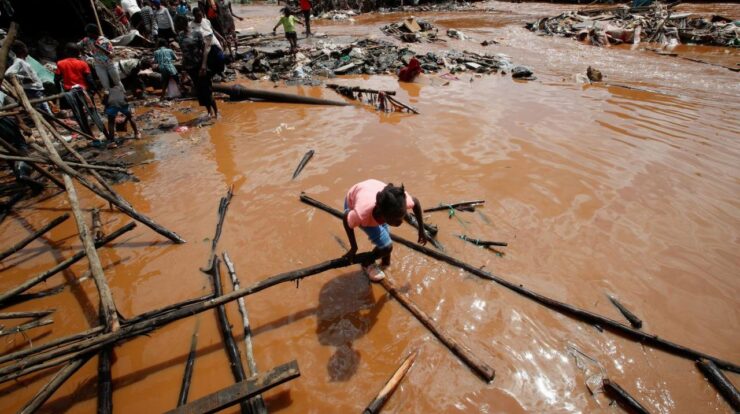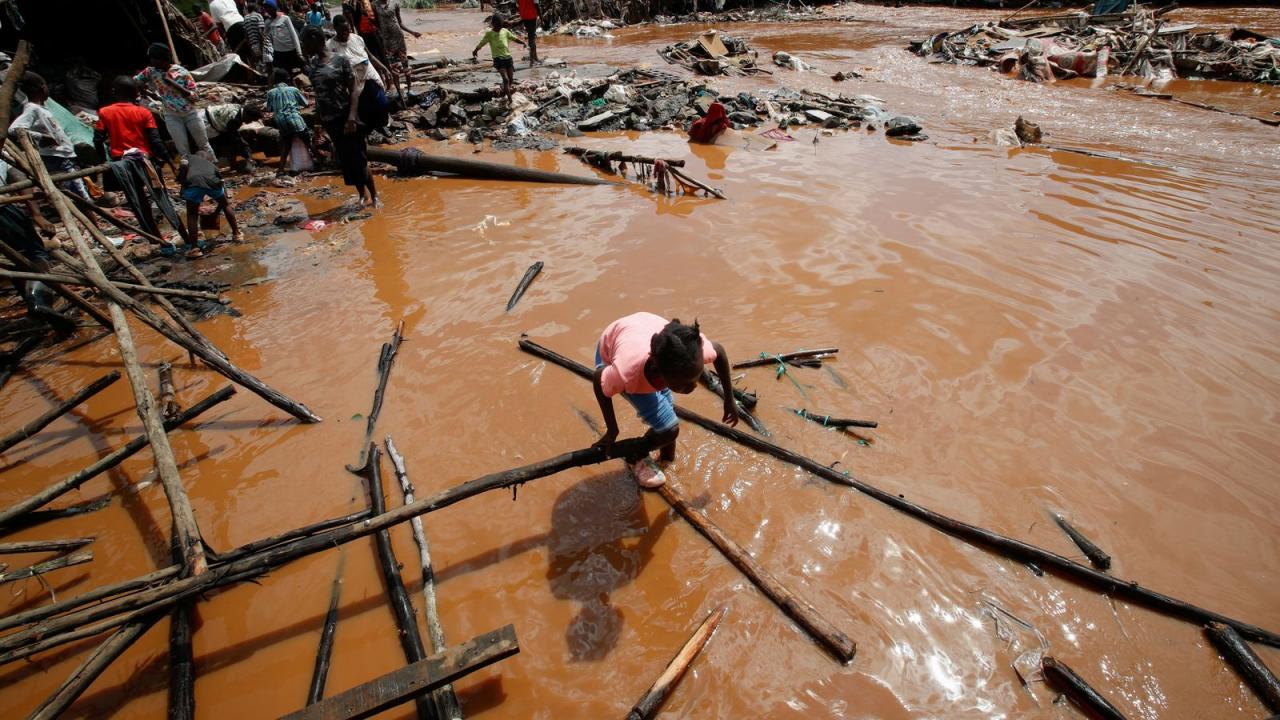
Kenya nairobi flooding – Kenya’s capital, Nairobi, has been ravaged by severe flooding, leaving a trail of destruction and displacement. The torrential rains have exposed the city’s vulnerabilities to climate change and inadequate infrastructure, highlighting the urgent need for sustainable solutions.
The impact of the flooding has been far-reaching, affecting infrastructure, displacing residents, and posing significant health risks. The government has taken measures to mitigate the flooding, but challenges remain, and community-led initiatives are playing a vital role in addressing the crisis.
Nairobi Flooding: Causes and Impacts

Flooding is a persistent problem in Nairobi, Kenya’s capital city. The city’s rapid urbanization, coupled with inadequate drainage systems, has made it highly vulnerable to flooding during heavy rainfall.
Nairobi Flooding Causes
Nairobi’s flooding is primarily caused by:
- High Rainfall Patterns:Nairobi experiences heavy rainfall during the rainy seasons, with annual precipitation exceeding 1,000 mm.
- Rapid Urbanization:Nairobi’s population has grown rapidly in recent years, leading to increased impervious surfaces such as buildings and roads. This reduces water absorption and increases runoff, contributing to flooding.
- Poor Drainage Systems:The city’s drainage systems are inadequate and often overwhelmed during heavy rainfall, leading to waterlogging and flooding.
Impact of Flooding on Nairobi
Flooding in Nairobi has severe consequences:
- Infrastructure Damage:Floods damage roads, bridges, and other infrastructure, disrupting transportation and communication.
- Displacement of Residents:Flooding forces thousands of residents to evacuate their homes, leading to temporary displacement and loss of property.
- Health Risks:Stagnant floodwaters provide breeding grounds for mosquitoes, increasing the risk of waterborne diseases such as malaria and dengue fever.
Government Response to Flooding
The Kenyan government has implemented several measures to mitigate flooding:
- Dredging Rivers:The government has dredged rivers and canals to improve water flow and reduce flooding.
- Construction of Drainage Channels:New drainage channels have been constructed to divert excess water away from populated areas.
- Public Education Campaigns:The government has launched public education campaigns to raise awareness about the importance of proper waste disposal and responsible land use to prevent flooding.
While these measures have had some success, there is still room for improvement in flood management.
Community-Led Initiatives
In addition to government efforts, communities have also played a significant role in addressing flooding:
- Community Clean-Ups:Residents organize regular clean-ups to remove litter and debris from drainage channels, reducing blockages and improving water flow.
- Tree Planting:Communities have planted trees along riverbanks and in open spaces to absorb rainwater and reduce runoff.
- Construction of Sand Dams:Community-led sand dams have been built to slow down water flow, trap sediment, and increase water infiltration.
These initiatives have demonstrated the importance of community involvement in flood prevention.
Sustainable Solutions for Nairobi Flooding, Kenya nairobi flooding
Long-term solutions to Nairobi’s flooding problem require sustainable approaches:
- Green Infrastructure:The adoption of green infrastructure, such as rain gardens, bioswales, and permeable pavements, can help absorb and infiltrate rainwater, reducing runoff and flooding.
- Restoration of Wetlands:Restoring degraded wetlands can create natural buffers that absorb excess water during heavy rainfall, reducing the risk of flooding.
- Land Use Planning:Implementing proper land use planning regulations can ensure that new developments do not increase impervious surfaces and contribute to flooding.
These sustainable practices can help Nairobi become more resilient to flooding and create a healthier environment for its residents.
Final Wrap-Up

Addressing the flooding in Nairobi requires a comprehensive approach that combines government efforts, community involvement, and sustainable practices. Green infrastructure, such as rain gardens and permeable pavements, can help reduce runoff and improve drainage. Long-term flood management strategies must prioritize resilience and adaptation to climate change.
FAQ Resource: Kenya Nairobi Flooding
What are the primary causes of flooding in Nairobi?
Heavy rainfall, urbanization, and poor drainage systems contribute to the flooding in Nairobi.
How has the flooding impacted Nairobi’s infrastructure?
Flooding has damaged roads, bridges, and buildings, disrupting transportation and essential services.
What health risks are associated with flooding?
Flooding can lead to waterborne diseases, respiratory problems, and mental health issues.






